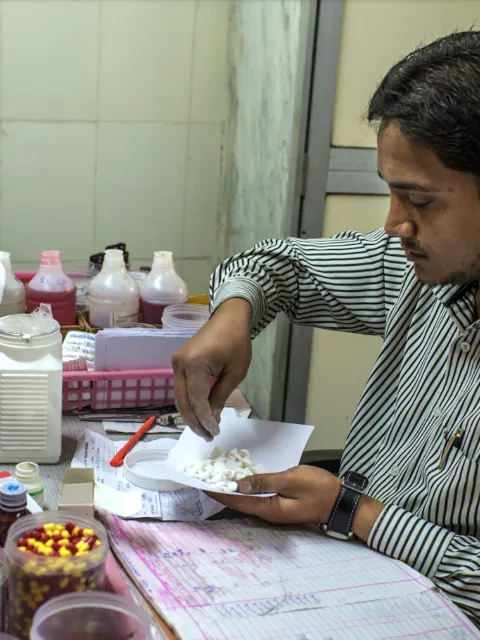Cancer beyond COVID-19: Strengthening the case for investment in cancer control
In this third and final Virtual Dialogue dedicated to cancer care during the coronavirus pandemic and beyond, a panel of experts made the case for cost-efficient investment in healthcare and cancer control.

Investing in healthcare should not be seen as a burden for countries or a net cost but as an investment in future generations that delivers widespread socio-economic benefits. The third and final Virtual Dialogue in the Cancer beyond COVID-19 series examined how to build more resilient healthcare for all and how to finance smart investments in cancer care that yield measurable results for patients and health systems.
The series was supported by MSD, Novartis, Pfizer and Canadian Partnership Against Cancer and this third Dialogue united a panel consisting of: Penny Dash, Senior Partner and Lead for Healthcare in Europe at McKinsey & Company; Andrea Feigl, Founder and Executive Director of the Health Finance Institute; Linda Gibbs, Oncology Lead, Central and Eastern Europe at Pfizer; and Anja Nitzsche, Head of Resource Mobilisation at the International Atomic Energy Agency (IAEA). The panel was moderated by Dr Cary Adams, CEO of UICC.
Health expenditure saves lives and is an investment in net wealth
Penny Dash presented a report by McKinsey and Company, “Prioritizing health: a prescription for prosperity”, which looks at the arguments for investing in healthcare. Essentially, it shows how improving health globally not only saves lives but also injects trillions into the global economy though greater productivity of healthier populations.
She noted that while life expectancy is rising, people are not necessarily ageing in better health. Furthermore, poor health is not only seen in older populations: 54% of years lost to poor health occur in working age (20-64 years), according to the McKinsey report), resulting in nearly three trillion dollars in lost economic output.
“Money currently spent on healthcare is not spent in a way that has the most impact or used in the most efficient manner. So there is a significant opportunity to improve how spending is currently allocated in healthcare.”
– Penny Dash, Senior Partner and Lead for Healthcare in Europe at McKinsey & Company
The report also shows that while there are regional divergences and that the poorest populations carry the highest burden, globally the primary reasons for poor health are attributable to diseases that can be treated and prevented. Interventions include increasing immunisation rates, reducing the prevalence of alcohol consumption and smoking, addressing hypertension and improving nutrition. “The global disease burden could be reduced by about 40% over the next two decades using interventions that already exist today,” said Penny Dash.
She cited a number of innovations that could emerge before 2040 and further reduce the disease burden by 6-10%: innovative vaccines, cell therapy and regenerative medicine for solid tumours, implantable microchips to manage chronic pain, connected and cognitive devices, tech-enabled care delivery, and digital therapeutics powered by artificial intelligence.
Resource mobilisation and bringing essential health services to low- and middle-income countries
Building on the need for efficient healthcare spending, Anja Nitzsche cited WHO’s “best buys” before expanding on a number of essential cancer care-related interventions that could greatly contribute to reducing incidence and mortality rates, according to the World Bank, WHO and the University of Washington.
These essential interventions include the prevention of tobacco-related cancers; the prevention of virus-related liver and cervical cancer through vaccination; diagnosis and treatment, in particular early breast and cervical cancer as well as selective childhood cancers; and the widespread availability of palliative care and making opioids more accessible for pain relief in countries where there is limited to no access.
“Essential interventions should be invested in across all countries. Some treatments of early-stage cancers that involve surgery, drug therapy and radiotherapy as well as preventive interventions are possible and should be argued for, even if only initially provided at a single centre of excellence in a major city.”
– Anja Nitzsche, Head of Resource Mobilisation at the Atomic Energy Agency (IAEA)
This essential package of cost-effective and feasible cancer care interventions would, if fully implemented, cost an additional US$20bn per year globally, or 3% percent of total current public sector health spending in low-and middle-income countries. Whereas the percentage ranges from 2.6% to 5% in middle-income countries, however, it reaches 13% in low-income countries (LICs), which is too high a financial burden for these countries to carry alone. It will require global solidarity and a concept of shared responsibility to meet these levels of spending, said Anja Nitzsche.
While there is substantial domestic investment in healthcare in many countries, out-of-pocket expenditures remain very high in LMICs. Furthermore, considerable resources are being brought to bear in fighting COVID-19, with world leaders pledging US$8bn to fund the COVID-19 response. Anja Nitzsche expressed concern that this might lead a “covidisation” of healthcare – a focus on pandemic prevention and research on coronavirus at the expense of other diseases.
Dr Cary Adams asked where the cancer community has had difficulties the past in convincing governments to invest in cancer control. Anja Nitzsche said that “the case primarily rests not on more money but more health for the money” and from this perspective the cancer community response has been too fragmented and needs to be more coherent. “Vocal advocacy at the national level with governments, with health ministers, is key,” she said, adding that there are lessons to be learned from the HIV community who have managed to sustain funding for HIV/AIDS.
Innovative financing solutions and connecting the dots between investments and benefits
Andrea Feigl offered an overview of how cancer care could benefit from a blended finance approach, which involves the strategic use of development and public finance to mobilise additional funds for development goals in LMICs. It is at the centre of innovative finance tools, result-based financing and public-private partnerships (PPPs), involving guarantees, advance commitments and technical assistance.
Such an approach requires connecting the dots between who pays and who benefits, according to Andrea Feigl. “A project must benefit financially or programmatically,” she said. Currently it has met with limited success in cancer control. Among the challenges Andrea Feigl cited are a lack of impact reporting and transparency, lack of incentives and low policy priority, and high upfront and administrative costs.
“Successful blended financing for cancer care requires interventions that are easy to understand, measurable impact in terms of cost savings and improved health outcomes, maximal use of technical assistance, a clear map of aligned stakeholders, an appropriate transaction size and a favourable regulatory environment.”
– Andrea Feigl, Founder and Executive Director of the Health Finance Institute
Better health data interpretation to provide measurable health, social and economic impacts as well as design-stage funding, which supports transactions considered risky or complex, could also encourage more blended finance in cancer control.
Examples of the successful use of innovative financing include: the Nigeria Cancer Health Fund (CHF), a PPP led by Roche for the bottom of the pyramid Nigerian cancer patients and Novartis Access, which provides affordable quality drugs for NCDs, including breast cancer, by “volume guarantee” (future payments contingent on performance in exchange for upfront investment).
Making the case for investment – the importance of a national cancer control plan
An effective national cancer control plan is key to solving the problem of inappropriately used resources, according to Linda Gibbs. Cancer control plans can help identify where investment is most needed and allow governments and stakeholders to make the right decisions, those that will lead to demonstrable improvements in patient outcomes and bring long-term returns for the economy.
Emphasis must be placed on improving cancer intelligence and using evidence-based approach to enact policies that provide affordable, high-quality and equitable cancer care. Research, education and training should also be financed, to maintain qualified, valuable talent and ensure sufficient capacity. Linda Gibbs also urged focusing on patients and their needs, and on the role of patient organisations in raising public awareness and improving behaviours.
"We have these challenges and these resources: how can we advocate for the collection of those resources in a robust national cancer control plan, not only to develop treatment but also prevention, detection and palliation.”
– Linda Gibbs, Oncology Lead, Central and Eastern Europe at Pfizer
Linda Gibbs cited Croatia, Poland and the Russian Federation as examples of countries that have developed a plan and are investing in it. She said that while Russia has had a cancer control plan for some time, it wasn’t particularly well funded. However, the government dedicated US$15bn just this year in developing the plan with ambitious goals: reduce cancer mortality by 8.5% by 2024, increase the early stages of identification rates up to 63%, increase the five-year survival rate up to 60% and reduce the one-year mortality rate to 17.3%.
The impact of COVID-19 on cancer care funding
Panellists concurred that the economic impact of COVID-19 will force governments to make choices in healthcare expenditure. The global response to the pandemic has shown, however, that change can happen rapidly in healthcare, and there is now clear sense of purpose and urgency that had previously been lacking.
Cary Adams posed the question as to whether the pandemic would spur the financing of health services or, on the contrary, starve investments in health and particularly in cancer care. Linda Gibbs felt that while there might be an increased focus on health, the fact that cancer might benefit remains highly uncertain. For her part, Andrea Feigl believed that the pandemic could drive urgency around non-communicable diseases such as cancer, considered risk factors for COVID-19.
Anja Nitzsche also saw an opportunity to build on the momentum around cervical cancer elimination, which she said would undoubtedly create funding opportunities. Connections with other diseases could create access to additional funds, for example with HIV, considering that more than 50% of cervical cancer cases are linked to HIV in Africa. Finally, she cited increased tobacco taxes and international taxation as means to generate funds for cancer control.
Discover the first Virtual Dialogue in the Cancer beyond COVID-19 series on "Reimagining cancer screening and diagnosis in the COVID-19 era" and the second on "Cancer beyond COVID-19: Bringing quality cancer care closer to patients."
You may also read about the experiences and responses of UICC member organisations to the pandemic at “UICC’s response to COVID-19.”
For more information on cancer care during the coronavirus pandemic, visit UICC’s "Cancer and coronavirus resources" page.
Last update
Monday 04 January 2021
